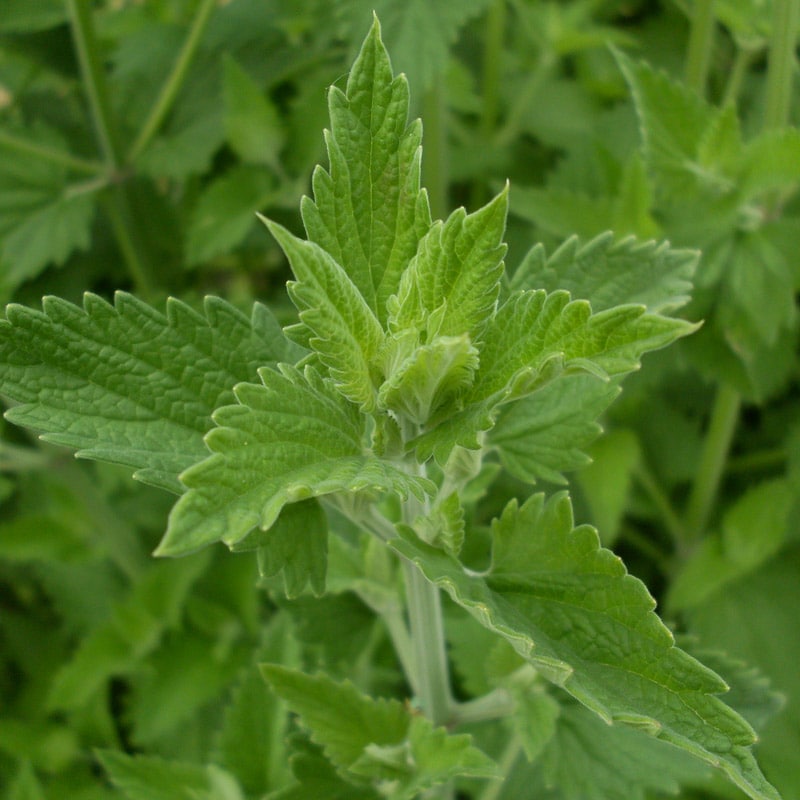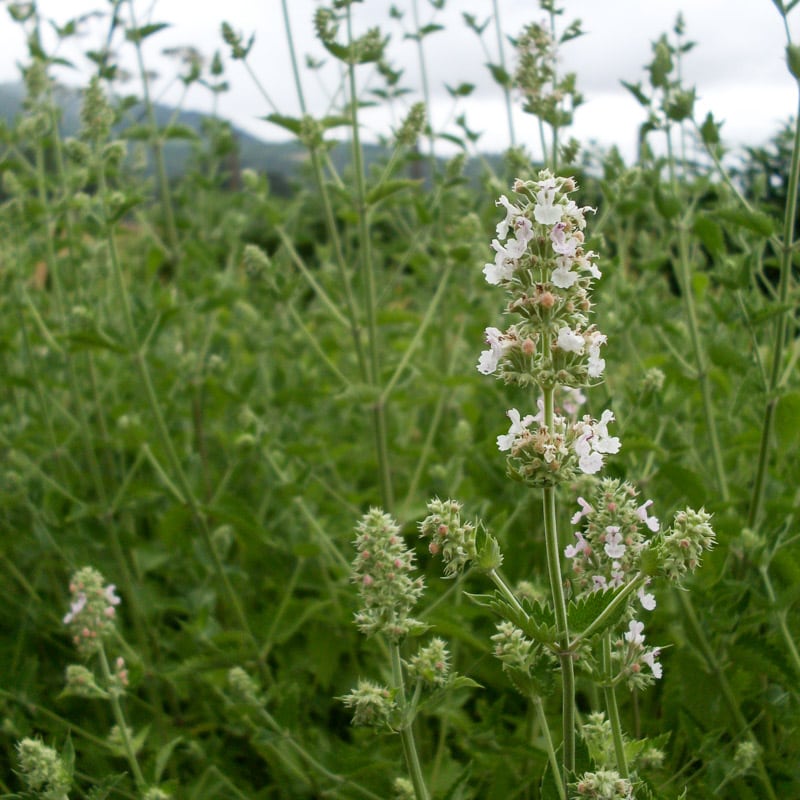Catnip (Organic)
Nepeta cataria. Perennial in zone 3-9.
Catnip is a member of the mint family and is especially suited for gardeners whose household includes members of the cat family. Our cats love catnip and can often be found laying in the shade of the catnip patch on summer afternoons, but cats aren’t the only reason to grow catnip. Drought tolerant and deer resistant, it may also repel aphids, ants, flea beetles, and squash bugs, even as it attracts many types of beneficial insects. A strong infusion of catnip leaves has been said to repel fleas from carpets and pets. Leaves may be used as a culinary herb and have also been used medicinally by humans for relaxation and to aid sleep. Catnip also has a history of being used in treating digestive disorders, reducing fevers, and a whole slew of other ailments. Plants can reach 5′ in their second year. Germination is sometimes slow and unpredictable.
Catnip seed is known to have high dormancy and benefits from cold stratification to germinate. Total Viability is printed on the seed packet and includes the germination percentage plus the dormant seed percentage as determined by an independent laboratory. Dormant seed is the portion of a seed sample that does not germinate during the short time period of the seed test, but is determined to be alive and respiring. Dormant seed is likely to germinate with cold stratification and/or longer germination times.
Catnip seed is known to have high dormancy and benefits from cold stratification to germinate. Surface-sow indoors for transplant 6 weeks before last frost. Germination in 10 – 20 days. Thin plants or transplant to 12” apart in full sun or partial shade. Keep seedlings well protected from cats! Perennial.
Seed Saving
Cut seedheads when seeds are dry, thresh by hand or by dancing, winnow to clean. Some cross-pollination may occur, isolate from varieties of the same species by 1/4 mile.





John –
Where did you grow this variety? California
Tough plants to drought, but they were less tolerant of long periods of wetness which caused some (but not all) to rot. Birds seem to love the seeds, even though they have to work to pick them out of the flower stalks since the seeds don’t readily shatter on their own. All the cats visit the plants at dusk, and one old tom cat will sleep in it as it seems to have therapeutic or pain relieving effect for him. Bee’s like it. Plants in photo are in 2 gallon pots.
Upvote if this was helpful (0) Downvote if this was not helpful (0) Watch Unwatch Flag for removal